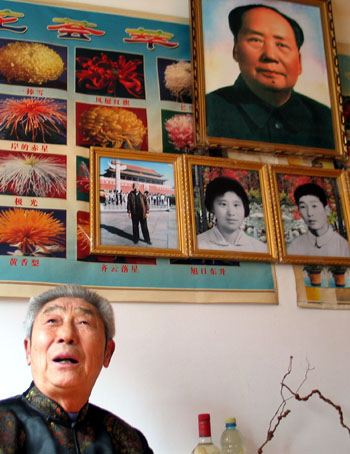Top News
Shantytown residents make a move
By Li Qian (Chinadaily.com.cn)
Updated: 2007-02-14 16:49
 |
Large Medium Small |
Transparency of this huge project has been unprecedented, with the whole procedure from shanty demolition, apartment construction, to flat distribution carried out in the eyes of the public. In an attempt to encourage quick moves- from shanty houses -into finished complexes, those who acted early were given priority in choosing apartments. Professional supervisors and ordinary shantytown residents were hired to guarantee construction quality.
What the government sees as an important move in building a harmonious society and something to copy in larger projects has had other effects outside of merely housing shantytown residents.
 An old man talks to media at his new home after the shantytown renovation project in Fushun, northeast China's Liaoning Province February 8, 2007. [Chinadaily.com.cn]  |
The project has not only helped brighten up the mood of people, but has also helped clear the air. Without central heating, people used to burn coal to keep warm in winter, which emitted heavy smoke and severely polluted the air. Nearly 20 square kilometers of land freed up by the construction of the six-floor buildings across the province was made full use of for new industrial parks, giving those formerly unemployed shantytown residents jobs. In Fuxin alone, 22,000 job opportunities were created since the first project was completed, largely within the new apartment complexes as property managers, security guards, vendors and medical staff.
A National Development and Reform Committee delegation praised the shantytown renovations in Tieling, a small city north of Shenyang, as a success, saying it displayed "great creativity and splendid practice" in the report. Nearly one third of the population of this undeveloped city lived in shantytowns before the renovation. Tieling had not had any experience in such a massive city reconstruction, but managed to accommodate the first batch of shanty dwellers. It was held up as a role model for other northeastern cities with better financing and industrial conditions.
Despite increased living expenses including fees for property management, central heating, running water and electricity, some of which residents didn't pay for at all in shantytowns, and occasional disputes concerning housing demolition and distribution, this gigantic housing project has won applause from most former shantytown residents, and is expected to not only close the chapter on shantytowns in Liaoning, but also aid in the nation's efforts to regenerate the economy of the old northeastern industrial base.